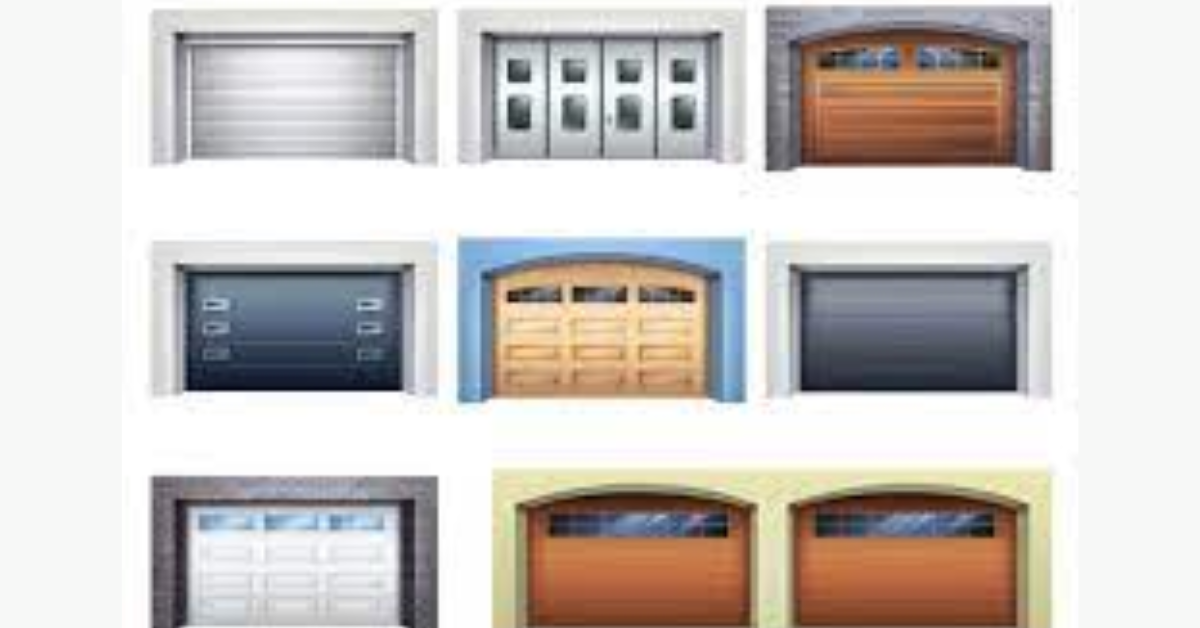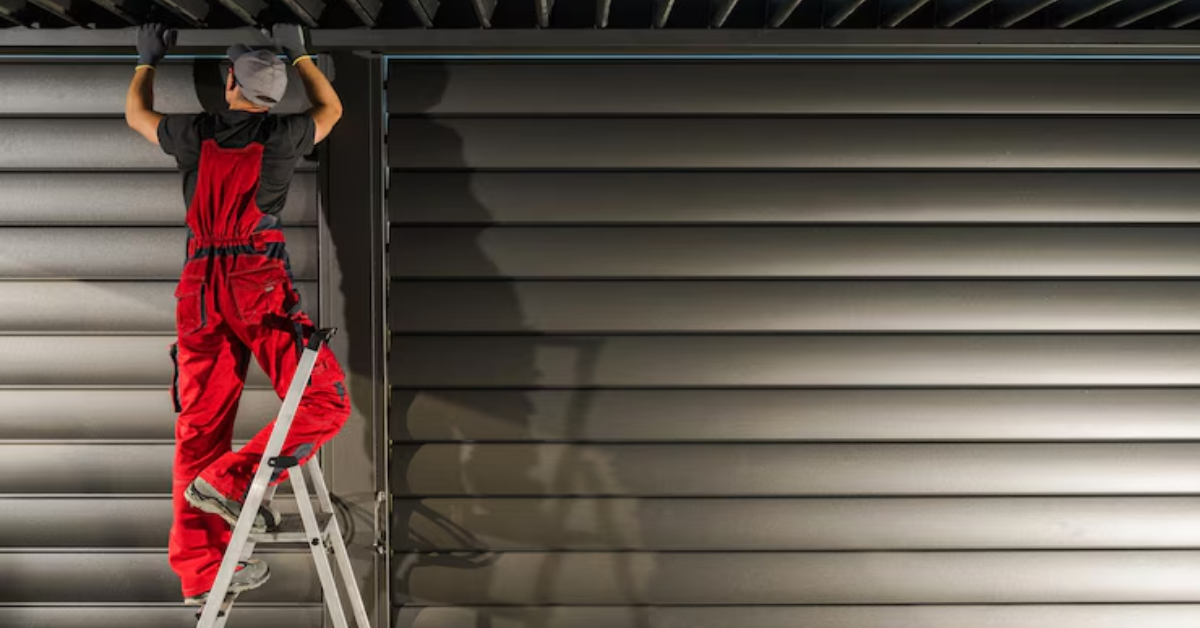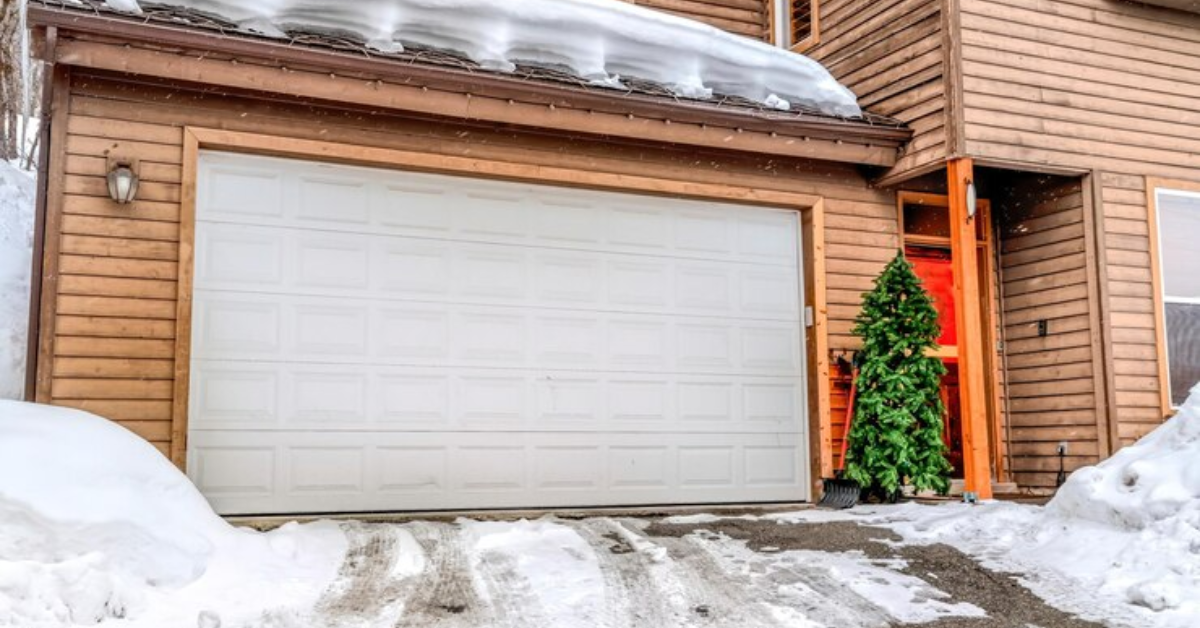A Comprehensive Guide to Different Garage Door Types
Garage doors stand as the silent sentinels of our homes, often overlooked yet essential in safeguarding our belongings and providing convenient access. Their significance extends beyond mere functionality, playing a pivotal role in the aesthetics and security of a property. As the gateway to our garages, they enhance curb appeal while offering protection to vehicles, tools, and cherished possessions housed within.
We dive into the vast world of garage doors in this comprehensive guide, examining the numerous types available today. From traditional to innovative designs, each style boasts unique characteristics, materials, and mechanisms. Understanding these options empowers homeowners and enthusiasts to make informed decisions tailored to their specific needs, whether it's durability, style, security, or ease of operation.
By navigating through this guide, you'll gain a nuanced understanding of the various garage door types, their distinguishing features, and the factors influencing their suitability for different environments. Join us on this exploration to uncover the perfect garage door solution that not only aligns with practical requirements but also elevates the overall appeal and functionality of your home.
Traditional Garage Doors
Traditional garage doors epitomize a timeless charm, often characterized by their classic appeal and familiar operation. These doors typically swing outward or upward in a single panel and are renowned for their simple yet elegant design. Traditional garage doors boast a straightforward construction, usually composed of a single solid panel that opens outward or upward along a hinge mechanism. Their design reflects a conventional aesthetic, embodying a timeless look that seamlessly integrates with various architectural styles. These doors may feature decorative elements such as raised panels or windows, enhancing their visual appeal. Wood has been a traditional favorite for crafting these doors due to its natural beauty and versatility. However, modern variations may incorporate steel, aluminum, or fiberglass, offering durability and low maintenance while preserving the classic aesthetic.
Pros:
- Traditional garage doors exude a classic charm that complements many home styles.
- They often allow for customization with various finishes, panel designs, and window options.
- Single-panel doors are known for their sturdiness and resilience.
Cons:
- The swing mechanism demands space in front of the garage, restricting parking in the driveway.
- Compared to sectional or insulated doors, traditional ones may offer less insulation against weather elements.
- Wooden doors may require periodic maintenance like painting or sealing to prevent weather-related damage.
Popular Designs
Raised Panel:
Featuring panels that are raised slightly above the surface, adding depth and texture.
Carriage House Style: Mimicking the look of old carriage house doors with decorative hardware and rustic charm.
Colonial Style: Embracing a classic, colonial-era aesthetic with clean lines and minimal embellishments.
These designs represent variations within the realm of traditional garage doors, each catering to different tastes and architectural preferences while retaining the hallmark elegance and simplicity that define this category.
Sectional Garage Doors
Sectional garage doors are a popular and space-saving option that operates by vertically rising in sections along tracks. Comprising multiple interconnected panels, these doors bend as they move upwards, folding into a compact space near the ceiling when fully opened. Their mechanism allows for smooth and efficient operation without occupying extra space outside the garage.
Typically constructed from steel, aluminum, or vinyl, sectional garage doors consist of horizontal panels joined by hinges. These panels slide up on tracks, guided by
rollers attached to the sides. An intricate system of springs and cables facilitates the smooth movement of the door, ensuring balanced and controlled operation.
Advantages:
- They don’t require extra space for opening and closing, making them suitable for properties with limited driveway space.
- Sectional doors often offer better insulation compared to traditional ones, reducing energy costs and maintaining temperature within the garage.
- Available in various materials, colors, and designs, providing flexibility to match different architectural styles and personal preferences.
Disadvantages:
- The intricate system of tracks, rollers, and springs might require professional maintenance and repairs.
- Malfunctioning springs or cables could pose safety risks if not properly maintained or repaired.
- Sectional doors might be more expensive initially due to their mechanism and insulation features.
Style Variations
Raised Panel: Commonly seen, featuring panels with a raised design for added texture.
Contemporary Flush Panels: Sleek and modern, these doors offer a smooth surface without raised elements.
Carriage House Style: Mimicking the look of old carriage house doors, often with decorative hardware for a rustic appearance.
Full View/Transparent Panels: Utilizing glass or transparent materials for a modern, stylish aesthetic while allowing natural light into the garage.
The versatility of sectional garage doors in terms of materials, styles, and functionality makes them a popular choice among homeowners seeking a balance between practicality, aesthetics, and space efficiency for their garage spaces.
Roll-Up Garage Doors
Roll-up garage doors, also known as rolling doors or coiling doors, operate vertically and roll up into a compact coil above the opening. Unlike sectional doors, they don’t consist of separate panels but are made of a single sheet of material that coils around a drum above the door frame. Roll-up doors are typically crafted from sturdy materials like steel or aluminum. These materials offer durability and strength to withstand harsh weather conditions and potential impacts.
Benefits:
- Roll-up doors maximize vertical space, making them ideal for garages with limited headroom or space constraints.
- Constructed from robust materials, they are resistant to dents and provide excellent security against intrusions.
- Their simple design often results in smoother and quieter operation compared to some other door types.
Drawbacks:
- Roll-up doors might have fewer design variations compared to sectional or traditional doors, limiting customization choices.
- If damaged, repairs might require specific expertise due to the mechanism and installation process.
- Their robust construction and mechanism can lead to a higher upfront cost compared to some other garage door types.
Common Applications
Roll-up garage doors find extensive use in various commercial and industrial settings due to their durability, security, and space-saving design. They're commonly seen in warehouses, storage facilities, and commercial garages where vertical space optimization and security are paramount. However, they're also increasingly being utilized in residential settings, especially in urban areas or homes with limited garage space. Their ability to withstand heavy usage, provide security, and maximize available space makes roll-up doors a preferred choice for environments requiring reliable and durable garage door solutions.
Slide to Side Garage Doors
Slide to side garage doors, also known as side-sliding doors, operate by moving horizontally along tracks that are positioned parallel to the garage ceiling. Unlike traditional swing-out doors, these slide sideways to open and close, offering a unique mechanism that doesn't require additional space in front of the garage. These doors typically consist of multiple panels joined together and mounted on rollers that glide along tracks installed on the garage walls. The panels slide to the side, stacking parallel to the garage wall when fully open, allowing for easy access without encroaching into the driveway or outdoor space.
Pros:
- They don’t require space outside the garage for operation, making them suitable for properties with limited driveway space or where the exterior space is precious.
- Their sliding mechanism often results in smooth and quiet operation compared to some other door types.
- They can be partially opened, allowing for quick access without completely opening the door.
Cons:
- The track system might require occasional cleaning and maintenance to ensure smooth operation.
- Some slide to side doors might have limited insulation compared to sectional or insulated doors.
- Depending on the material and design, these doors might have a higher initial cost compared to traditional swing-out doors.
Suitable Environments
Slide to side garage doors are well-suited for various environments, especially where space is a concern. They're particularly beneficial in urban settings or properties where maximizing the available space is crucial. Additionally, they can be an excellent choice for garages with irregular layouts or limited side clearance, providing convenient and efficient access without compromising on space.
Side-Hinged Garage Doors
Side-hinged garage doors are reminiscent of traditional barn doors, featuring a hinge mechanism on the side that allows them to swing outward. Unlike upward-moving doors, these open by swinging to the left or right, offering a classic and rustic aesthetic. These doors can be crafted from various materials, including wood, steel, aluminum, or composite materials. Wood is a popular choice due to its traditional appeal and the ease with which it can be customized. However, modern variations also incorporate durable and low-maintenance materials like steel or aluminum.
Advantages:
- They evoke a timeless, rustic charm, adding character and visual appeal to homes.
- They allow for partial opening, offering convenient pedestrian access without fully opening the door.
- Side-hinged doors often offer a range of design options, including different panel styles, hardware, and finishes.
Limitations:
- These doors require sufficient space for outward swinging, potentially limiting driveway space.
- Wooden doors may require periodic maintenance like painting or sealing to prevent weather-related damage.
- They might be more susceptible to forced entry compared to some other garage door types.
Design Options
Traditional Panel Design: Featuring horizontal or vertical panels, embracing a classic barn door appearance.
Carriage House Style: Mimicking the look of old carriage house doors with decorative hardware and rustic finishes.
Contemporary Variations: Modern iterations may incorporate sleeker designs or combine materials for a blend of traditional and contemporary aesthetics.
The charm and character of side-hinged garage doors make them a popular choice for homeowners seeking a nostalgic and classic look for their garages. While they might have some limitations regarding space and security, their customization options and timeless appeal continue to attract those looking for a distinct and traditional door style.
Tilt-Up/Up and Over Garage Doors
Tilt-up or up-and-over garage doors operate by pivoting on a hinge mechanism at the top of the door frame. When opening, they tilt upward and slide along tracks into the garage space, eventually resting parallel to the ceiling. This mechanism requires space both inside and outside the garage for smooth operation. These doors can be constructed from various materials, including wood, steel, aluminum, and fiberglass. Wood provides a traditional aesthetic and can be easily customized. Steel and aluminum offer durability and strength, while fiberglass combines durability with a lightweight structure.
Pros:
- The simplicity of a single panel often leads to fewer maintenance requirements compared to sectional doors with multiple moving parts.
- They can be crafted from various materials, offering choices based on durability, aesthetics, and maintenance preferences.
- Depending on the material chosen, tilt-up doors can sometimes be more cost-effective than other garage door types.
Cons:
- These doors need space to tilt and retract, both inside and outside the garage, potentially limiting driveway space.
- They might offer less insulation compared to sectional or insulated doors.
- Installation might require more expertise due to the mechanism and weight of the door.
Design Preferences
Raised Panel Design: Featuring panels with a raised surface for added texture and visual appeal.
Flush or Smooth Panels: Offering a sleek and modern appearance without raised elements.
Wood Grain or Textured Finishes: Mimicking the appearance of wood or adding texture to the surface for a distinctive look.
Window Options: Some designs incorporate windows or glass inserts to enhance aesthetics and allow natural light into the garage.
The versatility in materials and design options allows homeowners to choose a tilt-up garage door that aligns with their preferences for style, maintenance needs, and budget considerations, balancing aesthetics with functionality.
Specialty Garage Doors
High-speed garage doors are designed for rapid opening and closing, improving efficiency in commercial and industrial settings. Using advanced motorized systems and specialized tracks, these doors offer swift operation, reducing wait times for access while maintaining security and insulation.
Carriage house style doors evoke a nostalgic, rustic charm reminiscent of old carriage houses. They typically feature decorative hardware and panel designs resembling the look of swinging barn doors, adding a timeless and elegant touch to modern homes. Customized garage doors provide the freedom to tailor the door's design, size, materials, and finishes to suit specific preferences and architectural styles. From unique panel configurations to personalized colors and materials, customization allows homeowners to create a door that perfectly complements their property. Some unique features of the garage doors are:
Smart Technology Integration: Some specialty doors offer
smart features like remote operation, smartphone connectivity, and integration with home automation systems for enhanced convenience and security.
Insulated and Soundproofing Properties: Certain specialized doors provide exceptional insulation, maintaining temperature control within the garage and reducing noise transmission.
Impact Resistance: Specialty doors designed for high-traffic areas or extreme weather conditions may feature impact-resistant materials, ensuring durability and longevity.
Energy-Efficient Options: Some doors prioritize energy efficiency, employing materials and construction techniques that minimize heat loss or gain, contributing to reduced energy costs.
These specialty garage doors cater to specific needs, offering innovative functionalities, unique aesthetics, and advanced features beyond the standard garage door options. They serve diverse purposes, from enhancing curb appeal to addressing specific industrial or residential requirements.
Conclusion
Exploring the diverse array of garage door types reveals a spectrum of options catering to various needs and preferences. As you navigate through these choices, remember to prioritize factors such as functionality, aesthetics, and security to find the perfect fit for your home. When making a selection, keep in mind the importance of regular maintenance, as it ensures longevity and optimal performance, safeguarding your investment and maintaining the door's functionality over time. With proper care and thoughtful consideration, your chosen garage door can seamlessly blend practicality with style while enhancing the overall appeal and functionality of your property.




